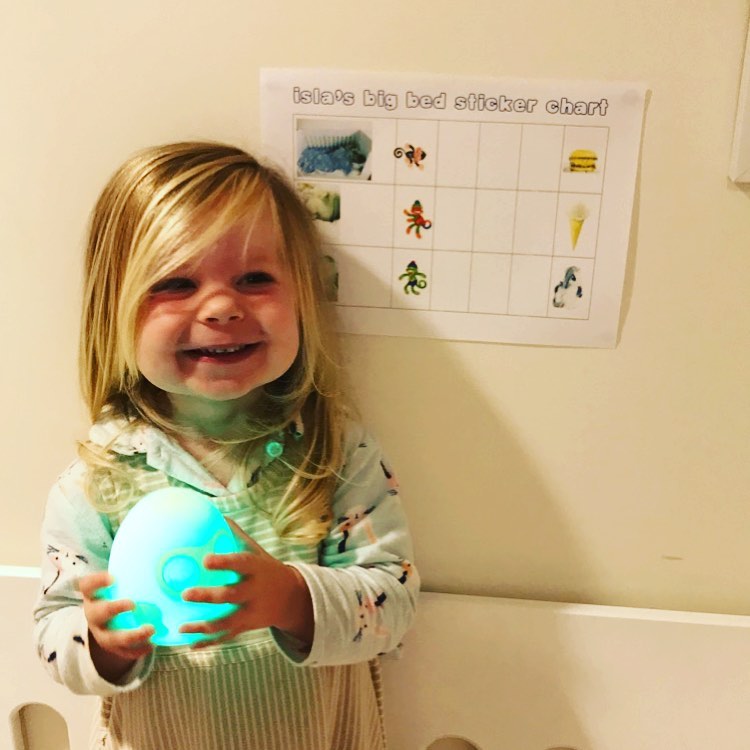Why nurturing your baby or toddler’s emotional and physical well-being makes sleeping well so much easier.
Do you sleep well when you’re scared? Or when you’ve just heard the saddest news?
Do you enjoy a peaceful night when you have a throbbing headache? Or suffer from heartburn?
Of course not. And the same goes for your baby or toddler.
Yet sadly, emotional and physical discomforts are still often overlooked when teaching a baby to sleep well. And that is a pity, because about 85% of sleep issues in babies under 24 months old could be solved completely or nearly completely, by addressing baby’s well-being. Prevented even if spotted and addressed early enough.
Below you will find 3 steps to show you how you too can make sure nothing keeps your little loved one from sleeping well.
But first let’s have a look at how exactly physical and emotional well-being has such a great effect on how your baby sleeps at night or at nap time.
How physical and emotional well-being influences your baby’s sleep
Physical and emotional discomforts are the main cause of all baby and toddler sleep problems. While they are usually not severe enough – luckily! – to explain the entire sleep issue, they do trigger most troubled sleep phases (sleep disorders are rare).
Then once the discomfort(s) fade, the sleep issue can fade as well but often lingers for longer because of stuck sleep patterns or undesired habits.
Teething is a typical example. Your baby may have been a super sleeper with long stretches at night for months on end, until that first sign of teething.
Uncomfortable with painful gums and hungry from reduced appetite (nursing can be painful when teething), she will find it harder to settle for sleep and wake more often at night again.
Once most of the teething pain is gone, your baby may not go straight back to sleeping as before – although many do. In stead, she may have developed a habit of waking up several times a night or of requesting a feed to be able to settle.
Other common discomforts such as separation anxiety, growth spurts, overtiredness, acid reflux etc. act in a very similar way.
— Please note that helping your baby sleep well through phases of discomfort does not make it a bad habit, as so often still advised!
It is on the contrary crucial to soothe your baby when she needs your help and to keep positive associations with sleep. The key is to realize what is happening and to pair discomfort relief with appropriate sleep techniques for self-soothing and staying asleep. And be assured, this will not require crying it out.
3 steps to tackle sleep disrupting discomforts
Step 1. Observe & recognize
Spotting discomforts is easy and difficult at the same time. A runny nose and a painful diaper rash are pretty obvious and you would not miss them.
However, many typical discomforts are not as evident and even the most observant of parents often miss them. Some again are clearly manifested but symptoms can resemble those of another issue – such as the symptoms of food allergies that mimic the symptoms of acid reflux (interesting leaflet on this topic here). It is important to also figure out these possible hidden causes of poor sleep.
The best way to do this is to go by symptoms. Observe your baby or toddler very closely and write down everything that you notice, from a tiny rash to screaming 30 minutes after a feed. Be honest and comprehensive.
Use specifically designed extensive symptoms tables or consult your local caregiver. Then be sure to relieve all discomfort, both physical and emotional, as much as possible.
Step 2. Pay most attention to what seems most trivial
Not taking seemingly trivial signs seriously may be this biggest mistake parents make when assessing their children’s sleep situation.
It is natural of course, not to expect grave effects from a simple runny nose. Especially since the sleep issue does not even necessarily disappear magically when the cause is relieved.
But as we have seen, to give our baby or toddler a fair chance to sleep well or to return to sleeping well after a phase of discomfort and disrupted sleep, relieving even the most trivial of discomforts is key.
This is how one mom, mother of a 5 month old baby girl reports on this…
Why the little things matter – by Ana M., mother of 5 month old baby girl
For me, the key to much better sleep for our whole family was in paying attention to the little things. In fact, the game changer techniques that I picked up from Heidi’s [symptom tables] were all things that, even as a secondtime mom, I didn’t really think could make THAT much of a difference! The diaper is a perfect example – so simple yet I had initially dismissed it. Each time my 4-month-old woke to feed, I noticed her diaper was HUGE, but it didn’t leak. So I left it alone. It took really thinking about all of the variables that made me realize I should take it seriously. I switched to nighttime diapers, and that first night, my daughter slept for 6 hours straight! And she has slept so much better ever since.
Practicing with the paci is another great example. Prior to reading [Overcome Frequent Waking], I thought that I’d need to wake up to re-insert my daughter’s paci at night until she figured out how to put it back on her own, at about 8 months. At Heidi’s suggestion, we played paci games with her for about a month, and now at 5 months, she’s able to get her paci back in her mouth all on her own most of the time! The funny thing is, the more we practiced, the less dependent on it she became at night. She now uses it a little then pulls it out, puts it in, takes it out, gets comfy and falls asleep!
I think the key to success is to consider all of the variables with fresh eyes and be open minded.
Step 3. Be consistent yet flexible
Finally once you have identified and relieved your child’s discomforts, use gentle and effective techniques to get her back on the right track with sleeping as necessary. As always, these techniques work best if you apply them consistently: that makes it easier for your baby to understand and learn.
However, it is absolutely fine to also be flexible at times when your baby is simply not feeling well and still recovering from whatever was bothering her.
In conclusion, whichever sleep challenge you and your little one are facing right now, remember always to have a close look into how she feels, both physically and emotionally. Whichever approach you choose to use for helping her sleep better, having your baby feeling well to start with makes all the difference.
Heidi Holvoet, baby & toddler sleep consultant and award-winning author is the founder of baby-sleep-advice.com. Parents worldwide achieve better naps and nights with Heidi’s effective gentle sleep solutions that acknowledge the uniqueness of every child and family, and use it to their advantage.
###
Ooly – More sleep for the whole family.
Put an end to your child’s bedtime battles, nighttime awakenings, and early morning wake-ups.
Visit our website
www.novo123.com/ooly
###
Author: Heidi Holvoet
Baby & Toddler Sleep Consultant, Award-Winning Author of the No-Tears Baby Sleep Books Series, and Founder of baby-sleep-advice.com.







I came across your page by searching SLEEP . I’m in Ireland. It’s 4.15am. I’m awake with my 3 year old son an hour now. For the 2nd Time tonight.
If I let him nap during the day he wakes at night
If I avoid the nap during the day he wakes at night. Mostly around 23.30/00.30 & again 02.30/03.30am
He will only go back asleep if I’m in his bed or sitting with him.
He will only go to bed with mammy.
I’ve tried everything from sitting at door. Crying it out. Walking out. Sneaking out. Bribes. My scented clothes.
His bedtime routine is pretty much the same every night. I change him. Bring him up. Read 3 books. And TRY TO LEAVE. I’ve tried park before hand to tire him out. I’ve done the banana before bed. Big meals. Small meals.
Absolutely NOTHING is working.
If I sleep in the bed with him he sleeps all night.
I wouldn’t mind doing this forever with him but I’m 7 months pregnant and now terrified of how I will manage with a newborn sleeping patterns and my 3 year old.
Please please please tell me there’s an answer.
Dear Sinead, first of all congratulations with your pregnancy!
For your little boy, you certainly have been trying a lot of things and I am sorry to hear about those difficult night wakings. It is quite common for toddlers this age to have a strong need to be close to their mom or dad at night, usually a combination of separation anxiety phases, distress due to some event or changes, habit and the need for reassurance by presence.
I do think there is an answer for you by exploring and remedy possible underlying causes, playing confidence boosting games and set up a strategy that helps your son be successful each time (tiny tiny steps at first, for example with the toddler-yoyo), so you can make consistent progress.
Feel free to contact me by email and I’ll be happy to help with a few specific ideas.
Kindly,
Heidi
Helpful information. Lucky me I discovered your web site unintentionally, and I am surprised why this accident did not took place in advance!
I bookmarked it.
Great! We are so happy to help 😉
Great post. I’m going through some of these issues as
well..
my baby sleep alot during the day. is that normal? she is 3 weeks old
Great advice! There are so many reasons baby may not sleep. Identifying the symptoms is the first step to solving the issue. Thanks for sharing!
I was up at night with my little munchkin trying to find a way to set him back to sleep. I was happy when I found your blog and I must say it was helpful. Usually he woke up two to three times a night but he’s down to once every night. I am curious if his daytime naps are affecting him and if so, how should I regulate them?
Heidi, such a great post! I never thought that teething could also be a culprit. My kids never got those when they started. Also, when they are overtired, they tend to be restless, so it is way better to get them sleep and more sleep, instead of keeping them awake. Anyhow, very helpful information.